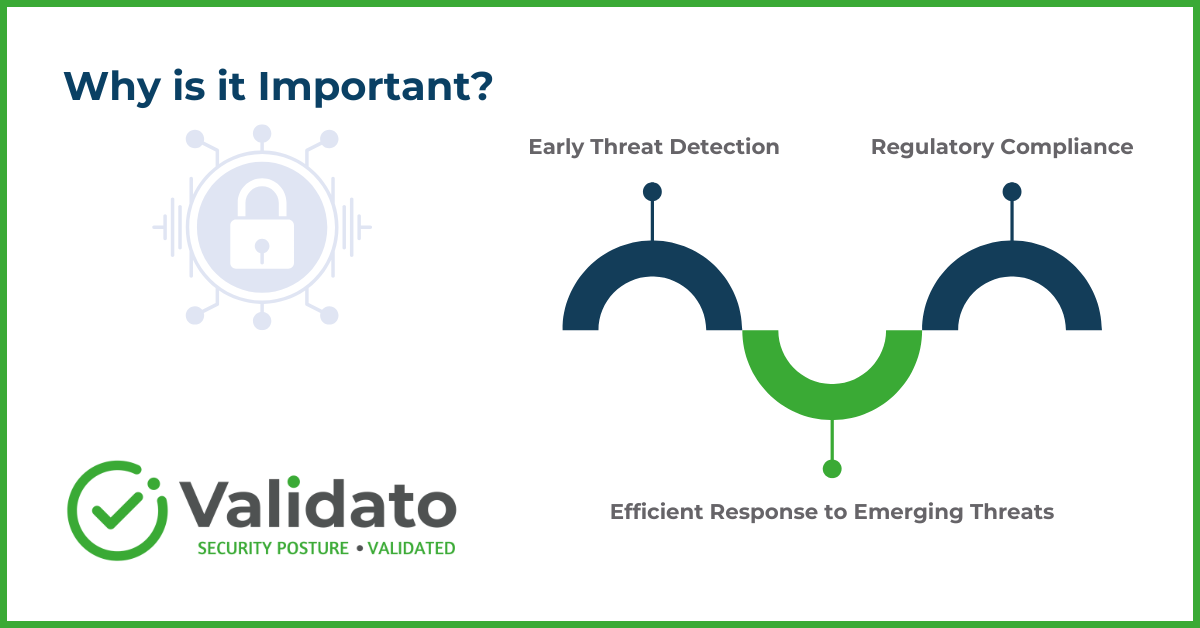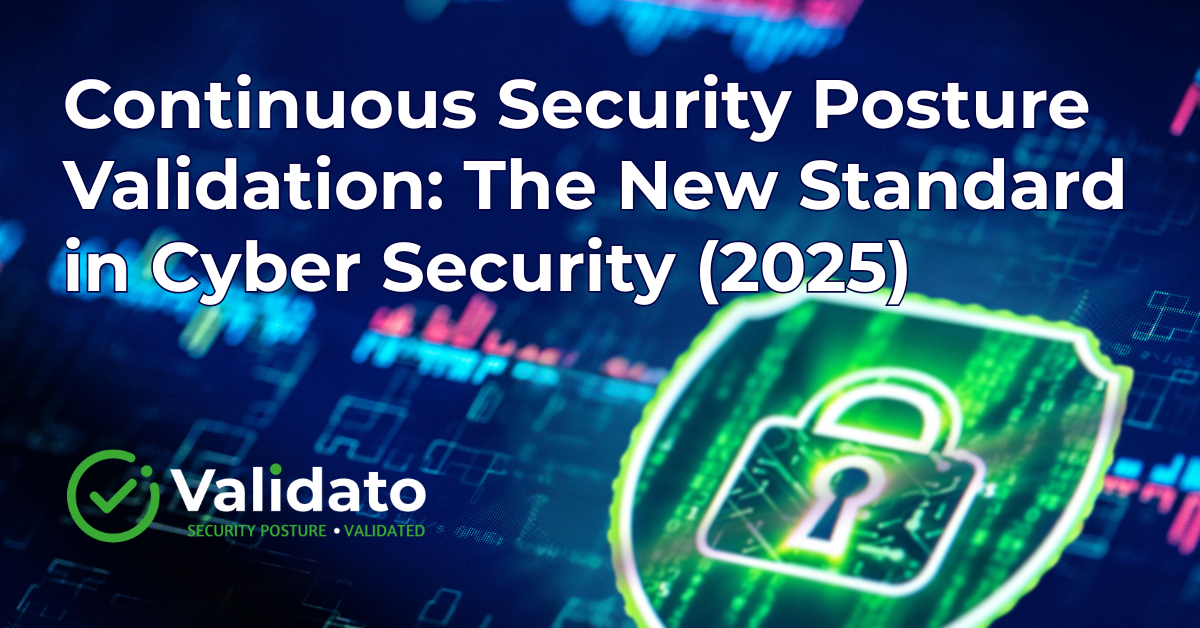In 2025, the cyber security landscape is more dynamic and challenging than ever before. Traditional, point-in-time security assessments are no longer sufficient to defend against sophisticated, constantly evolving threats. The imperative for organisations to maintain a robust security posture has led to a fundamental shift towards Continuous Security Posture Validation. This proactive methodology is reshaping how businesses approach their cybersecurity defences, moving from periodic checks to a constant, real-time evaluation of their protective capabilities and is reflected in new operational resilience regulations, like DORA, NIS2 and the upcoming UK Cyber Security & Resilience Act.
What is Continuous Security Posture Validation?
At its core, continuous security posture validation is the systematic and ongoing assessment of an organisation’s security controls to ensure resilience against cyber threats. Unlike traditional security evaluations that offer “point-in-time snapshots” (e.g., quarterly or annual reports), this approach involves constant testing and verification of defensive capabilities against realistic threat scenarios. It establishes a continuous feedback loop, ensuring that security measures remain effective and adaptive despite the relentless evolution of threats and changes within IT environments.
This methodology provides real-time visibility into the effectiveness of security. Instead of validating controls periodically, continuous validation ensures organisations are aware of their protection status on a regular basis. It integrates seamlessly with modern cybersecurity frameworks such as NIST, ISO 27001, and most notably, the MITRE ATT&CK framework, which provides a comprehensive matrix of adversary tactics and techniques. By adopting this continuous strategy, organisations establish a proactive security stance that can immediately adapt to new vulnerabilities and attack methodologies as they emerge.
Why is it Important?
The critical importance of continuous security validation is underscored by recent breach statistics. Organisations with fully deployed security automation, a key enabler of continuous validation, experience significantly lower breach costs. This dramatic financial difference highlights the immense value of this proactive approach.
Key benefits include:
- Early Threat Detection: By constantly testing controls against current attack methodologies, organisations can identify weaknesses before malicious actors exploit them, significantly reducing the Mean Time to Detection (MTTD) for security incidents.
- Regulatory Compliance: Continuous validation helps maintain adherence to evolving regulatory regimes like NIS2, DORA, and the UK Cyber Security & Resilience Act, by ensuring security controls remain effective over time. It provides documented evidence of ongoing security diligence, invaluable during audits.
- Efficient Response to Emerging Threats: When new attack techniques surface, validation systems can quickly test existing defences against these methodologies, enabling necessary adjustments before actual attacks occur.

How Does it Work?
The operational mechanics of continuous security validation involve several interconnected components. Its foundation is automated testing technology that safely simulates real-world attack techniques within production environments. These simulations rigorously test various aspects of the security infrastructure, from perimeter defences to endpoint protection systems.
The process typically involves:
- Baseline Establishment: Defining an initial, desired security posture.
- Ongoing Testing: Continuously testing against this baseline to identify deviations or weaknesses.
- Automated Execution: Modern platforms leverage automation to conduct thousands of security tests continuously, providing a comprehensive view of security effectiveness without overwhelming security teams.
- Feedback Loop: A critical element is the feedback loop that translates validation findings into actionable security improvements. When tests identify vulnerabilities or misconfiguration, the system generates specific remediation guidance for quick implementation.
- Threat Intelligence Integration: These platforms incorporate threat intelligence feeds to keep testing scenarios current with emerging attack methodologies, ensuring that validation efforts align with real-world attack techniques.
Key Components
Effective security posture validation comprises several essential elements that work together:
- Vulnerability Assessment: Identifying potential weaknesses in systems, applications, and infrastructure.
- Penetration Testing (Automated): Simulating sophisticated attack techniques to determine if vulnerabilities can be exploited but performed continuously rather than periodically.
- Configuration Validation: Ensuring security systems are properly implemented according to best practices and vendor recommendations, checking for misconfiguration.
- Control Effectiveness Testing: Verifying that security controls function as expected when faced with attack scenarios, covering preventative, detection, and response capabilities.
- Compliance Checking: Mapping security controls to relevant regulatory frameworks to ensure validation efforts support compliance requirements.
Differentiating from Traditional Security Testing
The distinction between continuous validation and traditional security testing is significant:
| Feature | Traditional Security Testing | Continuous Security Posture Validation |
|---|---|---|
| Frequency | Periodic (e.g., quarterly, annually) | Constant, ongoing, real-time insights |
| Scope | Often focused on specific systems or segments | Comprehensive view of the entire security ecosystem |
| Automation | Heavily reliant on manual processes | Leverages automation for thousands of regular tests |
| Effectiveness | Can miss vulnerabilities between testing cycles | Significantly reduces blind spots by providing ongoing verification |
| Context | May identify vulnerabilities in isolation | Provides context on how vulnerabilities might be exploited in attack chains |
Who Needs to Implement It?
While beneficial for nearly all organisations, certain enterprises gain particular value:
- Complex Infrastructures: Organisations with on-premises, cloud, and hybrid environments benefit from comprehensive visibility.
- Regulated Industries: Financial services, healthcare, energy, and public sector entities (e.g., subject to NIS2, DORA, UK CSRA) find it invaluable for demonstrating ongoing compliance.
- Sensitive Data Handlers: Companies managing personal, intellectual property, or financial records require continuous assurance of their protective measures.
- Distributed Workforce: As remote work expands, ensuring security controls remain effective across distributed environments becomes challenging without automated validation.
- Managed Security Service Providers (MSSPs): Leverage these platforms to verify the effectiveness of services provided to clients.
Tools for Continuous Security Posture Validation
The technological ecosystem supporting continuous validation includes specialised tools:
- Breach and Attack Simulation (BAS) Platforms: Form the core, automating the simulation of threat actor techniques.
- Automated Security Validation Platforms: Comprehensive platforms that extend beyond simulation to incorporate remediation guidance, compliance mapping, and prioritisation capabilities.
- Continuous Monitoring Systems: Complement validation by tracking security telemetry and identifying anomalies, providing a complete view when integrated with validation platforms.

Platforms like Validato are examples of solutions built on the MITRE ATT&CK framework, simulating real-world attacks to identify misconfiguration and gaps across various environments (Windows, Linux, Mac). They provide guided remediation information, enabling quick closure of gaps and immediate verification of improvements.
Maximising Your Security Posture
Implementing effective continuous validation requires careful integration with existing security programs. Best practices include aligning validation efforts with business objectives and risk management priorities, focusing on high-risk areas first, establishing clear metrics for improvement, and formalising processes for addressing identified vulnerabilities. Measuring ROI involves tracking metrics like reduced mean time to detection, decreased security incidents, improved compliance posture, and enhanced remediation efficiency.
As cyber threats become more sophisticated and frequent, maintaining continuous awareness of security effectiveness is critical. Organisations that embrace continuous security posture validation gain significant advantages in threat detection, incident prevention, and overall security resilience against modern cyber adversaries.
If you’re interested in learning more, contact our expert team today.


